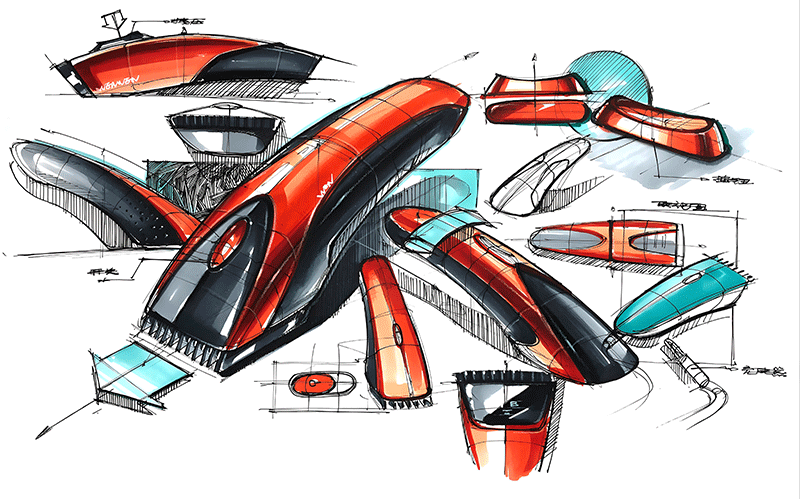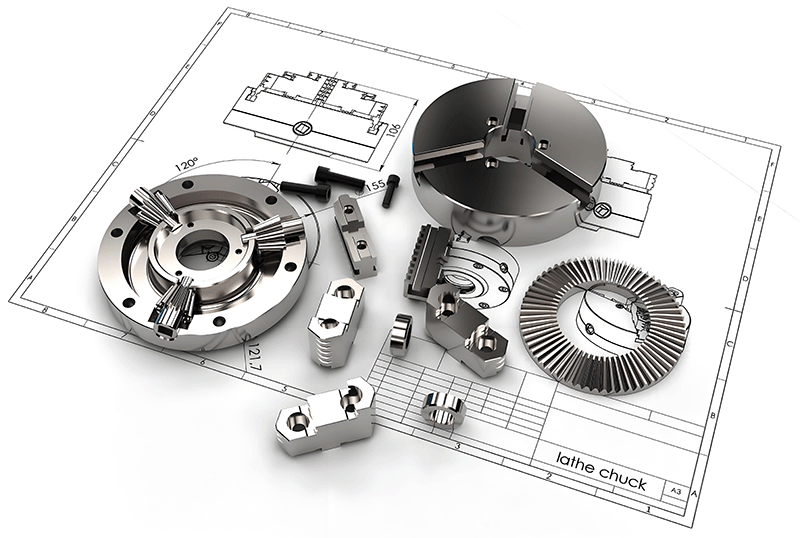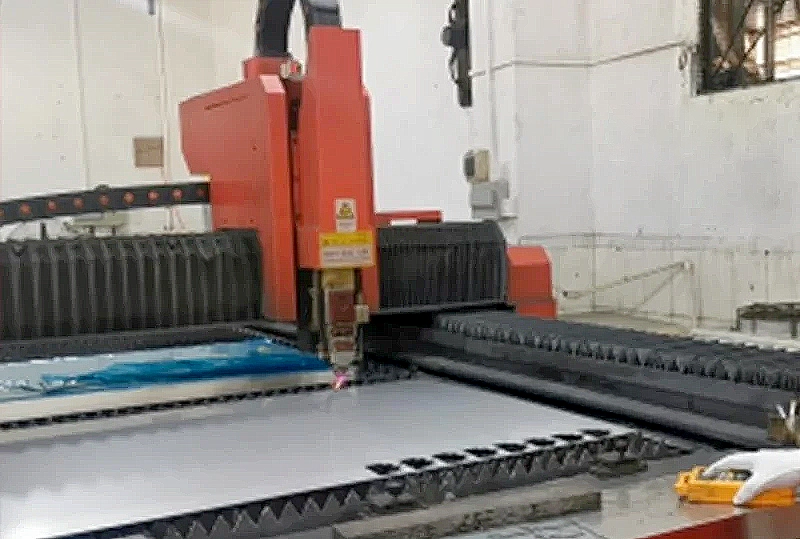As an industrial designer, you’re at the helm of innovation, crafting products that push the boundaries of what’s possible. But to bring your visions to life, you need to master the art of CNC machining processes. This detailed guide will be your roadmap, steering you through the intricacies of CNC machining to ensure your designs not only come to life but excel.

1. Clarifying Your Design Intent
Begin by outlining the core function, aesthetic appeal, and performance specifications of your product. Understanding the size, shape, and complexity of your design is crucial for choosing the right CNC machining processes.
2. Material Selection in CNC Machining Processes: The Foundation
The choice of material is foundational in CNC machining. Select materials that align with your product’s application, considering their machining characteristics such as hardness, toughness, and heat treatment properties. This decision will influence the entire machining process.

3. Feasibility Analysis: A Reality Check
Before committing to CNC machining processes, assess whether your design’s geometry is practical for CNC operations. Avoid overly complex structures that could complicate machining and consider additional processes like welding or surface treatment if necessary.
4. Choosing the Right CNC Machine: Tailored Fit
Selecting the right CNC machine is like choosing the perfect outfit for a special occasion—it needs to fit just right to make a statement. In the world of CNC machining, this means selecting a machine that not only fits the size and shape of your parts but also aligns with the specific machining processes you need to execute. Here’s a breakdown of the different types of CNC machines and their unique capabilities:
CNC Mills
- Ideal for complex geometries and intricate details.
- Capable of multi-axis machining, allowing for complex shapes and contours.
- Best for parts that require high precision and detail, such as molds and dies.
CNC Lathes
- Designed for rotational symmetry, perfect for cylindrical parts.
- Can perform turning, boring, and threading operations.
- Excellent for creating parts like shafts, axles, and cylinders with high precision.
Machining Centers
- Versatile machines that combine the capabilities of mills and lathes.
- Can perform a wide range of operations, including milling, drilling, and tapping.
- Suitable for parts that require both rotational and prismatic machining.
Vertical Machining Centers (VMCs)
- Designed for high-speed, high-precision machining of flat surfaces.
- Ideal for parts with multiple sides that need to be machined.
- Often used for automotive and aerospace components.
Horizontal Machining Centers (HMCs)
- Best for machining large, heavy parts that require stability.
- Capable of handling a wide range of operations, including milling, drilling, and boring.
- Often used in heavy industries where large components are common.
Turning Centers
- Specialized for turning operations on cylindrical parts.
- Can perform operations like turning, facing, and threading.
- Ideal for high-volume production of parts like bolts and screws.
Multi-Tasking Machines
- Combine multiple machining processes in a single setup.
- Reduces setup time and increases efficiency by performing multiple operations in sequence.
- Excellent for complex parts that require a combination of milling, turning, and drilling.
High-Speed Machining Centers
- Designed for high-speed machining, ideal for materials that are difficult to cut.
- Capable of achieving high precision and surface finish.
- Often used in the production of molds and precision components.
5-Axis Machining Centers
- Provide the highest level of complexity in machining.
- Capable of machining parts in any orientation, creating complex shapes and contours.
- Perfect for aerospace and automotive parts that require intricate designs.
Electrochemical Machining (ECM)
- A non-traditional machining process that uses electrical currents to remove material.
- Ideal for machining conductive materials with complex shapes.
- Provides high precision and excellent surface finish without mechanical stress.
Laser Beam Machining (LBM)
- Utilizes high-energy laser beams to remove material.
- Suitable for cutting and drilling intricate patterns and shapes.
- Often used in the medical and electronics industries for precision components.
By understanding the capabilities and limitations of each CNC machine type, you can make informed decisions that will streamline your CNC machining process and ensure the highest quality output. Remember, the right machine for you depends on the specific requirements of your project. ZHUANXIN Precision factory has a wide range of machining equipment that can help industrial designers and R&D teams provide the most appropriate machining process. Contact us to help you solve your product machining problems!
5. Tools and Fixtures: Precision Partners
Choose tools and fixtures that complement your material and machining requirements. The right tools can enhance the efficiency and quality of your CNC machining processes, while well-designed fixtures ensure stability during machining.
6. Programming and Simulation: Virtual Reality
Utilize CAD/CAM software to program your CNC machine, generating G-code that drives your machining processes. Simulate these processes to anticipate and avoid potential collisions or errors, ensuring a smooth transition from design to reality.
7. Machining Path Planning: Strategic Movements
Strategically plan the tool’s movement path during machining, focusing on minimizing idle travel and maximizing efficiency. This planning is essential for optimizing your CNC machining processes.
8. Cutting Parameters: The Art of Precision
Adjust cutting speed, feed rate, and depth based on the material properties and tool type. Consider using coolant to enhance machining efficiency and improve the surface quality of your workpieces.
9. Precision and Tolerance Control: The Essence of Quality
Define the accuracy requirements and tolerance range for your product. Select machining strategies and equipment that meet these precision needs, ensuring the highest quality output from your CNC machining processes.
10. Cost Estimation: Budget Blueprint
Evaluate all costs associated with CNC machining processes, including material, machining time, tool wear, and post-processing. Consider how batch production might impact your budget and plan accordingly.
11. Prototyping and Testing: The Test Run
Before mass production, create a prototype to test the functionality, durability, and appearance quality of your product. This step is crucial for identifying and resolving issues in your CNC machining processes.
12. Risk Assessment and Problem Solving: Anticipate and Adapt
Identify potential risks and issues in your CNC machining processes and prepare solutions. Whether it’s adjusting the design or machining parameters, being proactive can save you time and resources.
13. Communication with Manufacturers: The Bridge to Success
Maintain open communication with CNC machining manufacturers to ensure they fully understand your design intent and requirements. Their expert opinions and feedback can help optimize your CNC machining processes.
ZHUANXIN Precision Factory has the experience of working with many industrial designers to advance their projects, and is always able to quickly understand and respond to the needs of industrial designers and R&D teams, helping them to reduce project time and guarantee project quality. If you need such a partner, contact us!
14. Continuous Improvement: Evolving Excellence
Continuously improve your design and CNC machining processes based on test results and manufacturer feedback. Stay updated with the latest technologies to enhance your product’s competitiveness.
15. Documentation and Record Keeping: The Keeper of Knowledge
Document all design decisions, machining parameters, and test results. Maintain detailed records for future production and quality control, ensuring consistency and excellence in your CNC machining processes.
By following this guide, you’ll not only master the CNC machining processes but also ensure that your designs are manufactured with precision, quality, and efficiency. Dive in, and let’s make your designs a reality!


